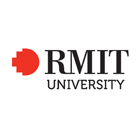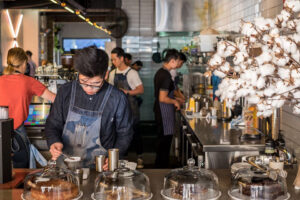Master of Laboratory Medicine
- Home
- Courses
- RMIT University (Royal Melbourne Institute of Technology University)
- Master of Laboratory Medicine
Master of Laboratory Medicine
Further your skills in medical science as you delve into the world of laboratory medicine and prepare for a career in the fascinating field of diagnostic pathology or medical research. Studying in central Melbourne, you will build the necessary knowledge to perform and oversee a range of diagnostic procedures in…
Categories
COURSE DESCRIPTION
Further your skills in medical science as you delve into the world of laboratory medicine and prepare for a career in the fascinating field of diagnostic pathology or medical research.
Studying in central Melbourne, you will build the necessary knowledge to perform and oversee a range of diagnostic procedures in a clinical pathology laboratory. You’ll also hone your skills in problem solving and critical thinking.
During this degree, you will choose two areas of specialisation. These advanced clinical pathology discipline streams include:
Anatomical pathology
Clinical biochemistry
Haematology
Medical microbiology
Transfusion and transplantation science.
Upon graduation, you’ll have built high-level skills in analysis and knowledge integration relevant to your area of specialisation.
The Master of Laboratory Medicine is designed for graduates of general science or biomedical science degrees who are interested in a career in diagnostic pathology or medical research but who lack experience in the diagnostic laboratory disciplines.
Career:
Your career in laboratory medicine
Graduates are employed as medical scientists in the field of diagnostic pathology, as medical researchers, or as clinical investigators.
Medical scientists work in:
Hospital laboratories
Private pathology laboratories
State health laboratories
Universities
Technical support within commercial companies.
EDUCATIONAL INSTITUTION
Since its establishment in 1887, Royal Melbourne Institute of Technology University (RMIT) has been meeting the needs of the community surrounding it. Originally a Working Men’s College, RMIT showed its flexibility during World War Two, training over 20,000 servicemen in communications to help with the war effort.Now, it is a true pioneer in international education, championing cross-border study opportunities with campuses in various countries. Granted formal university status in 1992, RMIT is ranked 21st in the world for universities that are less than 50 years old.RMIT is the largest higher education institution in Australia, currently with more than 82,000 students. With nearly 20% of those students coming from overseas, it is a university that truly welcomes diversity and is a melting pot of different cultures. RMIT has three campuses in Vietnam, a European hub in Barcelona, an office in Indonesia, and partners with 200+ institutions in 42 countries to provide study opportunities worldwide.
Since its establishment in 1887, Royal Melbourne Institute of Technology University (RMIT) has been meeting the needs of the community surrounding it. Originally a Working Men’s College, RMIT showed its flexibility during World War Two, training over 20,000 servicemen in communications to help with the war effort.
Now, it is a true pioneer in international education, championing cross-border study opportunities with campuses in various countries. Granted formal university status in 1992, RMIT is ranked 21st in the world for universities that are less than 50 years old.
RMIT is the largest higher education institution in Australia, currently with more than 82,000 students. With nearly 20% of those students coming from overseas, it is a university that truly welcomes diversity and is a melting pot of different cultures. RMIT has three campuses in Vietnam, a European hub in Barcelona, an office in Indonesia, and partners with 200+ institutions in 42 countries to provide study opportunities worldwide.




